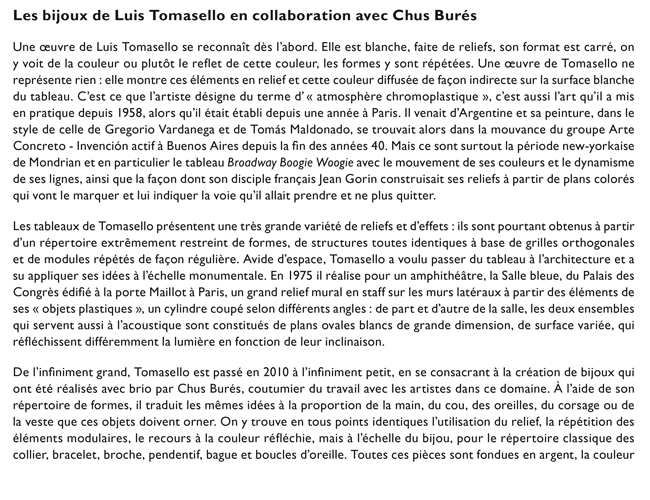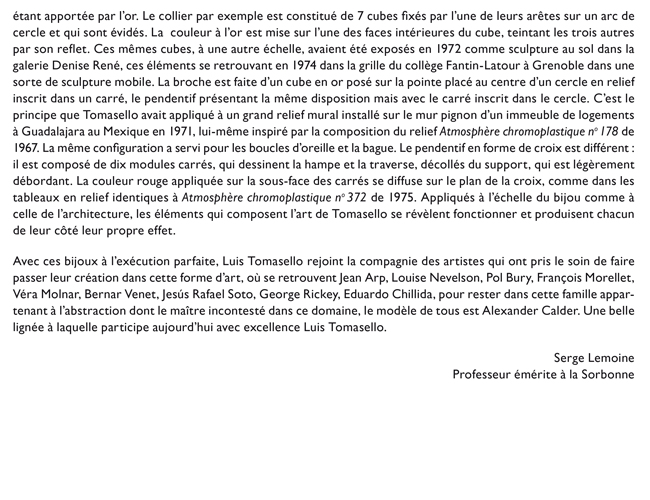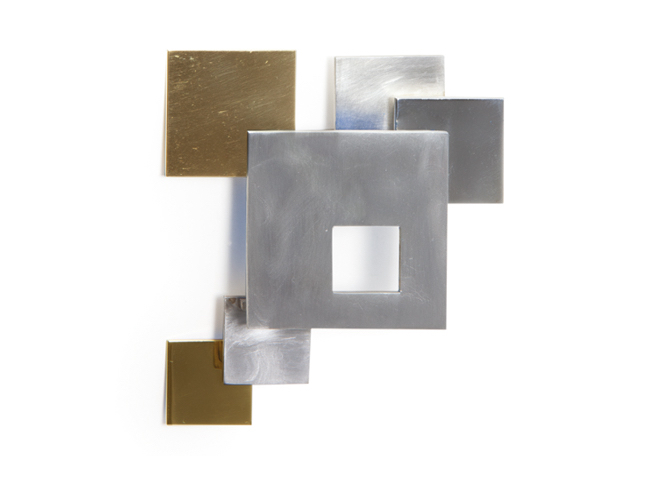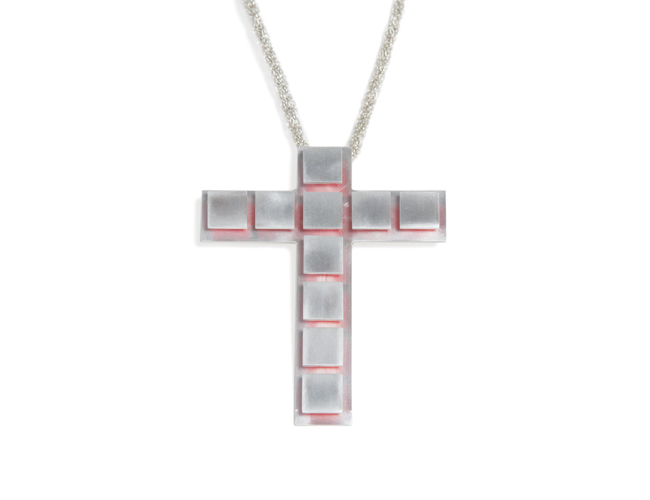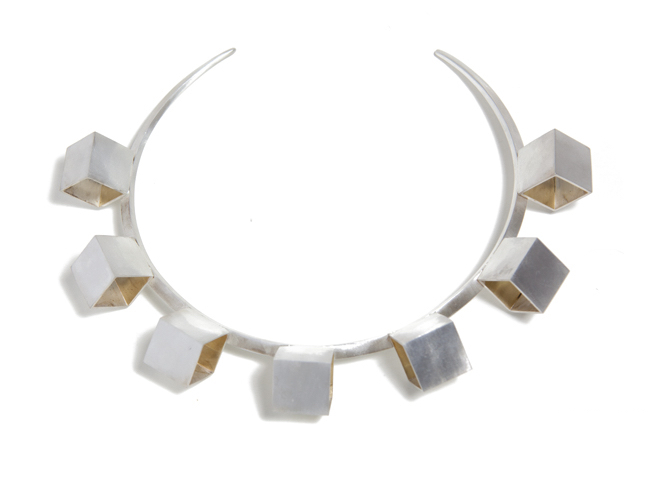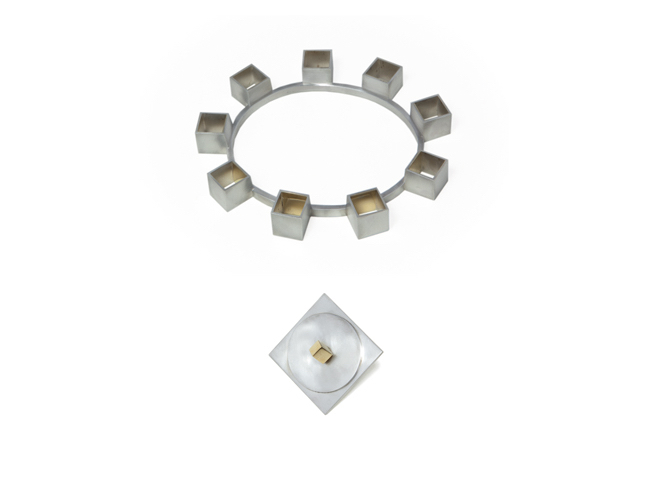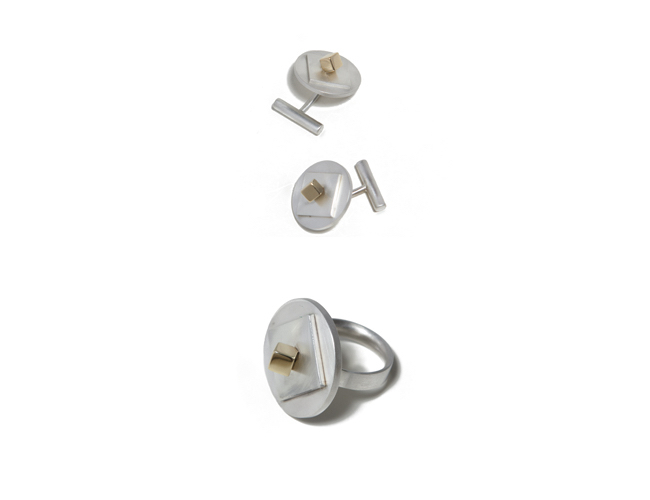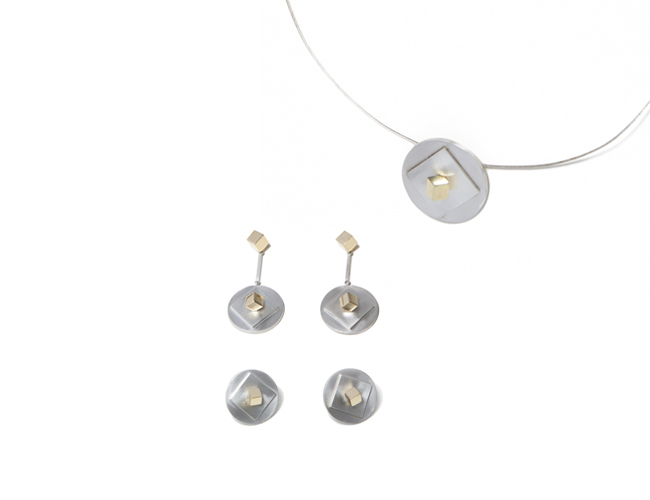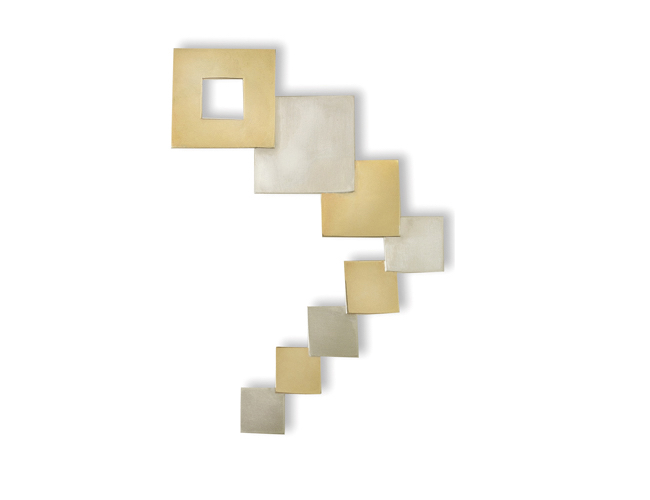Luis Tomasello Jewelry in collaboration with Chus Burés
Luis Tomasello’s work is recognizable at first glance. It is white, composed in relief and square in format; color can be seen in it, or rather, the reflection of color, and forms are repeated within it. A work by Tomasello does not represent anything; it simply presents these projecting elements and this color which is indirectly diffused across the painting’s white surface. It’s what the artist himself refers to as "atmosphere chromoplastique", and it is what he has been working on since 1958, the year after he moved to Paris. Coming from Argentina, his painting, like that of Gregorio Vardanega and Tomás Maldonado, was, at that time, influenced by the Arte Concreto-Invención Group active in Buenos Aires since the late 1940s. However, it was Mondrian’s New York period, in particular his painting Broadway Boogie Woogie with its movement of color and dynamic lines, and the way in which his French disciple, Jean Gorin, constructed relief with colored planes, that were to seriously make their mark on Tomasello, allowing him to find his future direction, from which he has never deviated.
Tomasello’s paintings use a wide range of relief and visual effects, achieved with a highly restrained repertoire of forms - identical structures based on orthogonal grids and regularly repeated modules. Hungry for space, Tomasello chose to move up from paintings to architecture, applying his ideas on a monumental scale. In 1975, he created a mural for the Salle Bleue auditorium in the Palais de Congrès at Porte Maillot, Paris. Made of staff, the mural covers the walls either side of the auditorium, composed of white oval shapes of varied surface, elements from his "objets plastiques" - a cylinder cut at different angles - which affect the acoustics and reflect the light in different ways depending on the angle at which they are inclined.
In 2010, Tomasello moved back down from monumental to minute, devoting his energy to designing jewelry which Chus Burés, an adept at working with artists in this field, fashioned with great brio. Drawing upon his repertoire of forms, Tomasello adapted the same ideas to the proportions of whatever these objects were to adorn - hands, neck, ears, blouses or jackets. They all share a number of points - a use of relief and reflected color, and a repetition of modular elements - adapted to the scale of each piece, within a traditional repertoire of necklace, bracelet, brooch, pendant, ring and earrings.
